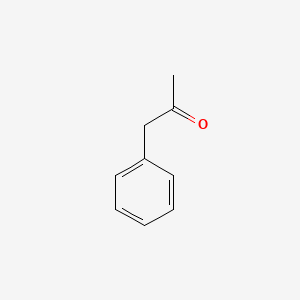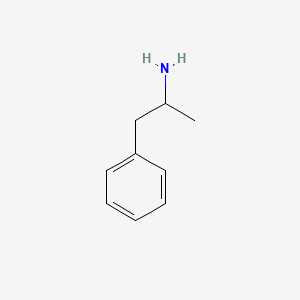In the world of organic chemistry and pharmacology, the synthesis of compounds plays a crucial role in drug development and production. Two substances that have garnered significant attention are Phenylacetone (also known as 1-Phenyl-2-propanone) and Amphetamine. This article explores the various aspects of these compounds, particularly focusing on their synthesis methods, chemical properties, and the factors that differentiate them.
Overview of Phenylacetone and Amphetamine
Before diving into the synthesis processes, it's essential to understand what Phenylacetone and Amphetamine are, alongside their significance in both industrial applications and pharmaceutical development.
What is Phenylacetone?
Phenylacetone is an aromatic ketone that serves as a precursor in the synthesis of various pharmaceuticals, including amphetamines. It has a molecular formula of C10H12O and is characterized by its distinctive odor. Due to its structural similarities with amphetamines, Phenylacetone is often utilized in their production. Organic oil
What is Amphetamine?
Amphetamine is a powerful central nervous system stimulant that affects chemicals in the brain and nerves that contribute to hyperactivity and impulse control. Chemically, it is classified as C9H13N and is used in the treatment of Attention Deficit Hyperactivity Disorder (ADHD) and narcolepsy. Its illicit production and consumption have also led to considerable regulatory scrutiny.
The Importance of Synthesis in Organic Chemistry
Organic synthesis involves the construction of complex chemical compounds from simpler ones. The importance of synthesis in organic chemistry cannot be overstated, as it enables the production of necessary pharmaceuticals, materials for research, and other compounds significantly impacting health and industry.
Section 1: Comparing Structures of Phenylacetone and Amphetamine
To understand their synthesis, we first need to establish the structural differences and similarities between Phenylacetone and Amphetamine.
1.1 Chemical Structures
- Phenylacetone Structure:
- Molecular Formula: C10H12O
- Structure: Contains a phenyl group (a benzene ring) attached to an acetonyl group (a ketone with a methyl group).
- Amphetamine Structure:
- Molecular Formula: C9H13N
- Structure: Amphetamine features a phenethylamine backbone with an amino group (NH2) at the alpha position.
Illustration of Structures:
Section 2: Synthesis of Phenylacetone

2.1 Historical Methods of Synthesis
Phenylacetone has several synthesis pathways. Historical synthesis methods include:
- Acylation of Benzene: Involves treating benzene with acetyl chloride in the presence of aluminum chloride, leading to the formation of Phenylacetone.
- Reduction of Phenylacetate: This process involves reducing phenylacetate using reducing agents to produce Phenylacetone.
2.2 Modern Synthetic Routes
Modern synthetic methodologies have evolved to include more efficient and green chemistry approaches.
- Transesterification: This method is increasingly favored due to its simplicity and higher yield. It incorporates phenyl esters and propionic acid derivatives.
- Michael Addition Reactions: Phenylacetone can also be synthesized through Michael addition reactions involving beta-dicarbonyl compounds and phenyl-substituted nucleophiles.
Section 3: Synthesis of Amphetamine

3.1 Classic Methods of Synthesis
Amphetamines can be synthesized in various ways, often starting from Phenylacetone.
- Reduction of Phenylacetone: The most common method involves first reducing Phenylacetone to the corresponding alcohol (phenylpropanol) and then subjecting it to reductive amination with ammonia.
3.2 Contemporary Synthetic Strategies
- Chiral Synthesis: Contemporary methods include asymmetric synthesis techniques that allow for the selective creation of desired enantiomers of Amphetamines, enhancing therapeutic efficacy.
- Enzyme-Catalyzed Synthesis: Utilizing enzymes for amplification can provide environmentally friendly pathways while producing less hazardous waste.
Section 4: Comparative Analysis of Synthesis Techniques
The synthesis methods for Phenylacetone and Amphetamine can vary considerably in terms of environmental impact, efficiency, time, and cost.
- Yield and Purity: Phenylacetone synthesis tends to have higher yields than amphetamine due to the complexity of the latter, which often requires multiple steps and purifications.
- Safety and Legality: The synthesis of both compounds is subject to strict regulations due to their potential for abuse. Methods that utilize hazardous chemicals or generate toxic waste are increasingly scrutinized.
Section 5: Applications in Pharmaceuticals
5.1 Role of Phenylacetone
Phenylacetone serves as a vital precursor to many pharmaceutical compounds, particularly those that modulate the nervous system.
5.2 The Importance of Amphetamine in Medicine
Amphetamines are extensively used to treat ADHD and are also studied in applications involving depression and sleep disorders. The ability to synthesize these compounds efficiently is critical to meet medical demand.
Section 6: Ethical and Regulatory Considerations
6.1 Ethical Implications
The production and distribution of amphetamines raise ethical issues, particularly concerning their potential for abuse and addiction. Conscious efforts are needed in research to develop safer alternatives without malicious motives.
6.2 Regulatory Landscape
Both Phenylacetone and Amphetamine are subject to numerous international regulations. Understanding these regulations is crucial for chemists and manufacturers involved in their synthesis and distribution.
Section 7: Future Directions in Research and Industry
As the fields of organic chemistry and pharmacology evolve, new synthesis methods are on the horizon, influenced by advanced technologies such as artificial intelligence and machine learning, which can optimize synthesis pathways. Further research into alternative precursors may also provide safer and more efficient methods for producing these compounds.
Conclusion
Understanding the synthesis of Phenylacetone and Amphetamine is essential, not only for academic knowledge but also for practical applications in the pharmaceutical industry. As research and technology advance, the potential for improved synthesis methods will continue to grow, fostering innovations in drug development that prioritize safety, efficiency, and therapeutic effectiveness.
References
- U.S. Department of Justice. (2023). Controlled Substances Act.
- Smith, J.N. & Smith, R.L. (2021). Organic Synthesis. Oxford University Press.
- Lawrence, P.E. (2020). The Chemical Development of Pharmaceutical Products. Wiley.
- Brown, T.A & Jones, M.K. (2019). Phenylacetone and its Uses. Journal of Organic Chemistry.

Comments
Post a Comment